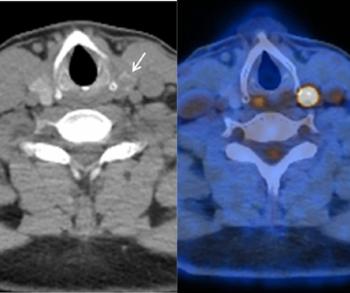
DXA group chooses third-party phantom
Dual-energy x-ray absorptiometry (DXA) firms are making progressin their efforts to standardize the bone-mineral density measurementsof competing DXA machines (SCAN 5/8/91). A committee composedof DXA manufacturers, researchers and other parties
Dual-energy x-ray absorptiometry (DXA) firms are making progressin their efforts to standardize the bone-mineral density measurementsof competing DXA machines (SCAN 5/8/91). A committee composedof DXA manufacturers, researchers and other parties concernedwith bone densitometry issues has tentatively agreed on a phantomcrucial to the cross-calibration of DXA systems.
The phantom is not intended for broad clinical use in siteswith more than one type of DXA system. It will be used primarilyby the manufacturers to develop their equipment with the goalof standardizing measurement output.
Rather than relying on a calibration system developed by anyone DXA company, the Committee for Standards in DXA selected aphantom offered by the Committee d'Actions Concerte-BiomedicalEngineering (COMAC-BME), a standards subcommittee of the EuropeanEconomic Council.
The phantom decision was finalized during a standards committeemeeting in conjunction with the eighth International Workshopon Bone Densitometry at Bad Reichenhall, Germany, in May. Adoptionof the technology is contingent on independent and manufacturertesting to verify that human measurements using DXA correspondwith results gained from the phantom, said Russell H. Nord, directorof research for DXA supplier Norland.
Dr. Willi Kalendar, a Siemens engineer, designed the COMACphantom. Siemens sells quantitative computed tomography bone densitymeasurement systems but is not a DXA supplier.
The phantom is composed of synthetic bone made from hydroxyapatitepowder and soft tissue represented by a water-equivalent epoxy.It was designed for multicenter studies sponsored by the EEC,said Dr. Harry Genant, a professor of radiology, medicine andorthopedic surgery at the University of California at San Francisco.
Genant, who represented the National Osteoporosis Foundation,at the meeting, volunteered to deal with the next intercalibrationhurdle. He will be the first of several researchers to check thevalidity of results gained from the phantom against human studiesconducted at his UCSF laboratory.
The study comparing in vivo and in vitro results using thefour manufacturers' systems should be completed by early fall,Genant said.
IF THE PHANTOM PROVES COMPATIBLE, it will then be up to the manufacturersto use it to recalibrate their systems to provide density measuresthat agree with those recorded on competing systems, Nord said.The group will meet again in August at the American Society forBone and Mineral Research conference in San Diego.
The Committee for Standards in DXA includes representativesfrom four DXA manufacturers--Norland, Lunar, Hologic and Sopha--alongwith the COMAC-BME, NOF, the ASBMR and the American Associationof Physicists in Medicine.
The committee gave itself permanent status at its May meeting.Membership will be expanded to include Japanese representation,Nord said. The group is seeking nominations to fill that slot.
The phantom selection represented the first tangible progresstoward DXA intercalibration since the bone mass measurement techniquewas introduced in 1987. DXA systems are accurate to within 1%when measuring bone density, but the results can vary by up to12% when the test is repeated on another manufacturer's system.The differences are caused by conflicting assumptions about thenature of bone and the size of the area where the measurementsare taken, said Richard Mazess, Lunar president.
Intercalibration differences have posed a barrier to DXA'sacceptance. "In the commercial world, this tends to be ahot issue," Nord said.
At the same time, leading manufacturers have not been willingto adopt standards posed by competitors. COMAC's entry as an independentthird party is seen as a way to find an industry-wide standardwithout forcing any of the manufacturers to concede that a competitor'scalibration approach is better than its own.
Newsletter
Stay at the forefront of radiology with the Diagnostic Imaging newsletter, delivering the latest news, clinical insights, and imaging advancements for today’s radiologists.




























